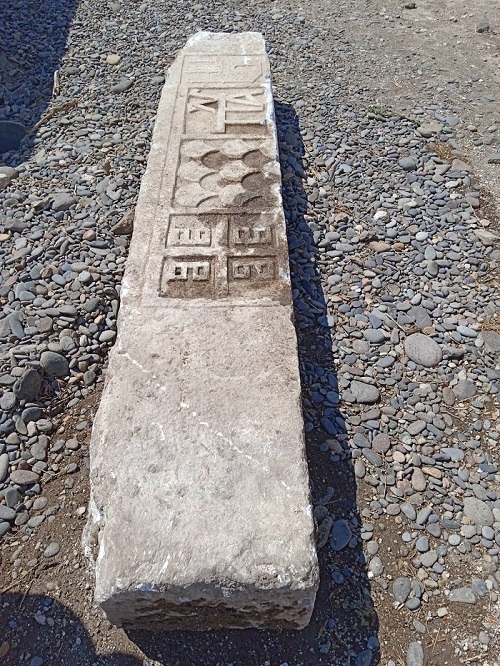
The discovery of a 3.50-meter-long marble lintel on Greece’s Lesvos is likely to rewrite the island’s late Byzantine history, the Ministry of Culture announced on Tuesday.
The artifact was found during an excavation near the foundations of the Byzantine gate of the castle of Agioi Theodoroi and linked to the ancient city-state of Antissa, one of the ancient Aeolian city-states of the island of Lesvos.
According to the Ministry of Culture, the lintel was found during the excavation of the southeastern part of the medieval sea wall of the castle of Agioi Theodoroi, also known as Ovriokastro, next to the Byzantine gate of the castle.

The marble lintel on Lesvos bears the emblem of the Genoese House of Gattilusio
The lintel bears in relief the heraldry of the Genoese House of Gattilusio, as well as that of the Palaiologos dynasty, which, until today, were only known from their equivalents in the medieval castle of Mytilene and indicate the handover of the governance of Lesvos, as well as its castles, from the Byzantines to the Gattilusio dynasty.

The most interesting thing, however, about the lintel of this Byzantine gate is that next to the emblem of the Palaiologos, instead of the double-headed eagle, a symbol of Byzantium, a depiction of a castle with a main gate and three rectangular towers on the acropolis was found. It is a depiction which seems to be identified with the contemporary Byzantine castle of Agioi Theodoroi, which was handed over in 1355 AD by the Byzantines to the Gattilusi.
It is noted that the written sources and testimonies to date do not preserve any depiction of the Byzantine castle of Agioi Theodoroi.
The marble lintel is the first representation of it and gives evidence of its form, unknown to us until today, as it had undergone substantial reconstruction during the 15th century by the House of Gattilusio.
The House of Gattilusio was a powerful Genoese family, which controlled a number of possessions in the northern Aegean from 1355 until the mid-15th century.
Historians say that the family had developed close connections to the Byzantine ruling house of the Palaiologos—”four successive generations of Gattilusio married into the Palaiologos family, two to emperors’ daughters, one to an emperor, and one to a despot who later became an emperor”—which could explain their repeated involvement in Byzantine affairs.
See all the latest news from Greece and the world at Greekreporter.com. Contact our newsroom to report an update or send your story, photos and videos. Follow GR on Google News and subscribe here to our daily email!



